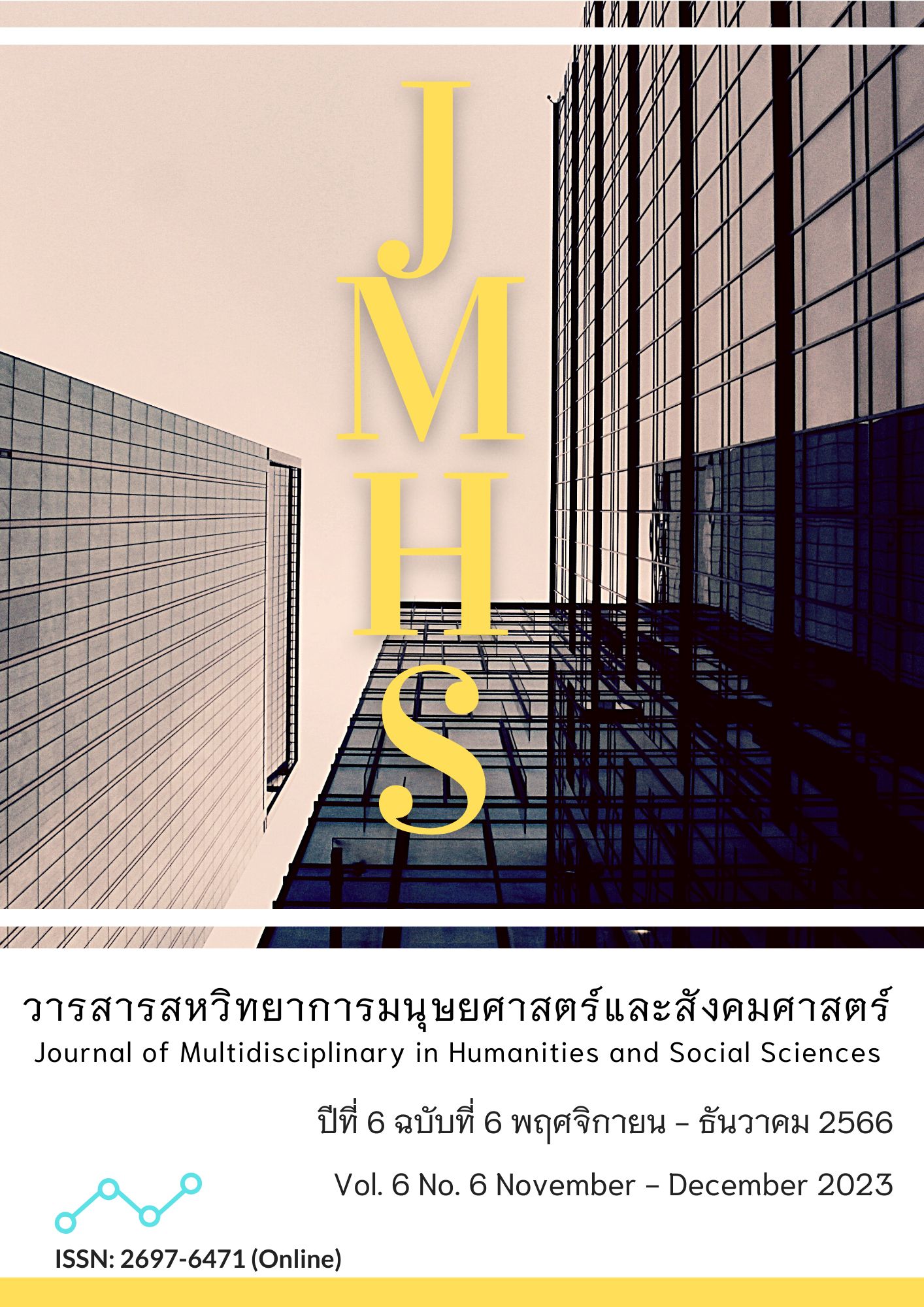Communication Management Plan to Prevent Social Violence in the Digital Era
Main Article Content
Abstract
This study aimed to: 1. create a management proposal and media governance mechanism to prevent social violence in the digital era; 2. study knowledge management and lifelong learning for future skills of mass media to prevent social violence in the digital era; 3. manage media literacy for youth to prevent social violence in the digital era; 4. develop a virtual media to prevent social violence in the digital era; and 5. create a communication management plan to prevent social violence in the digital era. The concepts and theories used were knowledge management, management, news value, media violence, media literacy, virtual media, and attitudes and behaviors (KAP). The research areas were in Bangkok and Nakhon Pathom Province. The population used in the study were media regulators, media executives, journalists, junior high school students, and kindergarten teachers in Nakhon Pathom Province and Bangkok. The research methods combined qualitative and quantitative methods, as well as research and development. Data were collected through surveys, in-depth interview forms, and group discussions to specify the factors in the creation of a communication management plan to prevent social violence in the digital era. The results were as follows:
1. The main factors in the creation of the communication management plan to prevent social violence in the digital era are divided into three groups: media organizations, professional journalism associations, and mass media cooperation.
2. Media organizations and professional journalism associations gained the knowledge of professional journalists.
3. Media organizations, professional journalism associations, primary school teachers, and parents gained media literacy knowledge. The developed virtual media and non-violence platforms can prevent media violence in primary schools and exchange knowledge to prevent social violence in the digital era.
4. The communication management plan to prevent social violence in the digital era was developed and presented to the public and three organizations.
The knowledge from this research on the plan of management to prevent social violence in the digital era is useful to government agencies, media organizations, professional journalism associations, primary school teachers, and parents to prevent media violence in the digital era.
Article Details

This work is licensed under a Creative Commons Attribution-NonCommercial-NoDerivatives 4.0 International License.
Views and opinions appearing in the Journal it is the responsibility of the author of the article, and does not constitute the view and responsibility of the editorial team.
References
Arshad, M., Farooq, O., & Farooq, M. (2019). The effect of intrinsic and extrinsic factors on entrepreneurial intentions: The moderating role of collectivist orientation. Management Decision, 57(3), 649-668. Retrieved from https://www.emerald.com/insight/content/doi/10.1108/MD-04-2016
Chinnapong, P. (2007). How violence in the news has a direct impact on children. Retrieved from https://mgronline.com/qol/detail/9600000059439
Deawkee, T. & Chaisuwan, B. (2007). The ethics of citizen journalist on children news reporting via social media. E-Journal Silpakorn University (Humanities, Social Science and Arts), 11(2) 582-597.
Desouza, K., & Paquette, S. (2011). Knowledge management: An introduction. Neal-Schuman.
Elsaesser, C., Patton, D. U., Weinstein, E., Santiago, J., Clarke, A., & Eschmann, R. (2021). Small becomes big, fast: Adolescent perceptions of how social media features escalate online conflict to offline violence. Children and Youth Services Review, 122, 105898. https://doi.org/10.1016/j.childyouth.2020.105898
Fayol, H. (1949). General and industrial management. London: Sir Isaac Pitman & Sons.
Galtung, J. (1965). Institutionalized conflict resolution: A theoretical paradigm. Journal of Peace Research, 2(4), 348-397. https://doi.org/10.1177/002234336500200404
Grundy, T. (2006). Rethinking and reinventing Michael Porter's five forces model. Strategic Change, 15(5), 213-229. https://doi.org/10.1002/jsc.764
Honderich, T. (2014). Actual consciousness. USA: Oxford University Press.
Intharaprasert, S. (2014) “The relationship between media influence and violent behavior of children and youth in Bangkok. Journal of Multidisciplinary in Social Sciences, 10(3), 17–36. Retrieved from https://so03.tci-thaijo.org/index.php/sduhs/article/view/29156
Kuzmanovic, D., & Popadic, D. (2013). Use of the Internet by youth in Serbia: Opportunities and risks. Retrieved from
Lukchansuk, P., & Kultawanit, K. (2019). Photography exhibition to promote the image of virtual agriculture: Online for the new generation of youth. Rattana Bundit University Academic Journal, 14(2), 1–16. Retrieved from https://so02.tci-thaijo.org/index.php/etcedumsujournal/article/view/259492
Ponte, C., Bauwens, J., & Mascheroni, G. (2009). Children and the Internet in the news: Agency, voices and agendas. In Kids Online (pp. 159-172). Policy Press. https://doi.org/10.51952/9781847427342.ch013
Phasukyued, P. (2007). Knowledge management from principles of thought to actual practice. Bangkok: Silk.
Popadić, D., Pavlović, Z., Kuzmanović, D., & Petrović, D. (2016). Global kids online Serbia: Balancing between opportunities and risks. Results from the pilot study. Retrieved from https://reff.f.bg.ac.rs/bitstream/id/7821/bitstream_7821.pdf
Silverblatt, A. (1995). Media literacy: Keys to interpreting media message. Westport Connecticut: Praeger. Retrieved from
Steger, M. B. (2013). Judging nonviolence: The dispute between realists and idealists. Routledge.
Urwick, L. F. (1970). Papers in the science of administration. Academy of Management Journal, 13(4), 361-371. https://doi.org/10.5465/254827
Van Dam, A., Forsberg, A. S., Laidlaw, D. H., LaViola, J. J., & Simpson, R. M. (2000). Immersive VR for scientific visualization: A progress
report. IEEE Computer Graphics and Applications, 20(6), 26-52. Retrieved from https://ieeexplore.ieee.org/abstract/document/888006
Wade, K. (1971). The structural significance of the number of skeletal bonding electron-pairs in carboranes, the higher boranes and borane anions, and various transition-metal carbonyl cluster compounds. Journal of the Chemical Society D: Chemical Communications, (15), 792-793. https://doi.org/10.1039/C29710000792
World Health Organization. (2002). Conceptual framework and definition of violent acts. Retrieved from http://stin.ac.th/th/file.pdf.


